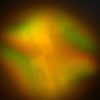Early Tourmanile Tongs for the determination of crystal geometry in optical mineralogy, ca. 1860
Stock Number: FG_22031
Sold
A pair of Tourmaline Tongs (c.1860). made of two tourmaline crystals mounted in cells on a brass fork-like holder with a milled knob screw for setting the internal distance, used for testing the optical sign of mineral crystals, with four cork-mounted mineral crystals cut to provide their interference figure.
Circa
1860
Countries of manufacture
France, Germany, UK and Ireland
Description
Tourmaline is a crystalline boron silicate mineral compounded with elements such as aluminum, iron, magnesium, sodium, lithium, or potassium. Tourmaline is classified as a semi-precious stone, and the gemstone can be found in various colors. Tourmaline crystals are highly birefringent, a crystallographic feature resulting in the split of a ray of light crossing the crystal outside its optical axis into an ordinary and an extraordinary ray, being polarized at right angles to each other. However, the E-ray is rapidly absorbed, so if the crystal is a few millimeters thick, the transmitted light is linearly polarized. Tourmaline tongs is a primitive polariscope device having a transparent tourmaline crystal thin section in each half, mounted in cork in independently rotatable oxidized brass disks at the ends of a pair of spring tongs mounted with the transmission axes at right angles to each other. Specimens, such as the mineral crystal specimens mounted in square paper-covered cork plates (provably by Steeg & Reuter) seen here, are slipped between the two tongs and observed by holding the system up to the eye. These specimens contain each a crystal slice set in a specific vibration axis of its optical indicatrix to yield an interference figure (seen in the photos taken with a cellphone camera through the instrument seen here). The device was invented by Jean-Baptiste Biot (1774-1862), as an inexpensive, effective, and easy-to-use polariscope. In 1816, the Scottish physicist, David Brewster (1781-1868), had devised a simple polariscope in which the object to be examined was held between two plates of a singly refracting crystal (he used agate) placed transversally to one another. This early experimental work in physical optics, mostly concerned with studying the polarization of light and the birefringence of crystals, was the first step in creating the field of optical mineralogy.
Ask the Dealer
Dealer information
 Gilgamesh
Gilgamesh
Gilgamesh is a mythological hero from the ancient cultures of West Asia, who embarked on a journey in search of youth and eternal life. Fleaglass Gilgamesh is located in Israel. As an Emeritus Professor of archaeology, I have spent over four decades researching the material culture of the distant past, utilizing the microscope as a powerful research tool. For the past thirty years, I have collected microscopes from the first 300 years of this remarkable instrument's history and have studied the cultural context of their use.
What started as a passion has turned into an obsession, and I now cultivate a nearly unique collection of historical microscopes from West Asia. From time to time, I offer surplus or particularly interesting items from my collection for sale. I am happy to provide free advice to any interested collector. If you would like to receive photos, information, and bibliographic references, or if you wish to discuss the details of the items I have for sale, please feel free to reach out.















